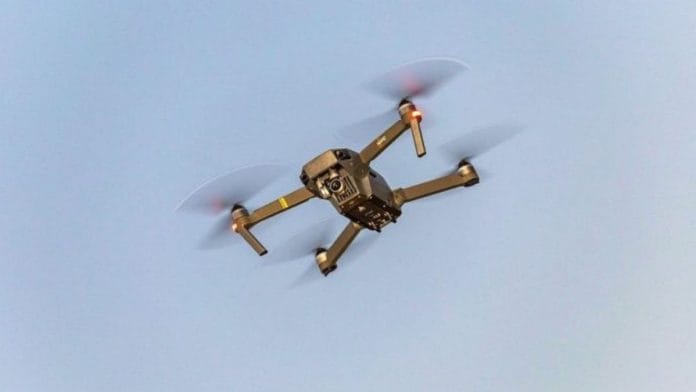New Delhi: Concerned about the use of Chinese spare parts in drones supplied to the Army, a top Army officer Wednesday sought honesty from companies dealing in drones. This comes after intelligence agencies flagged the use of Chinese components in drones purchased by the armed forces.
Speaking at Bharat Drone Varta-Road to Indigenisation—an event organised by the Federation of Indian Chambers of Commerce & Industry (FICCI) in New Delhi— Major General CS Mann, additional director general, Army Design Bureau, said, “Since it’s a matter of national security concern, there have to be truthful claims of indigenous capabilities. That’s the start point for every one of us. Only then will we be able to address the challenges which are there.”
Intelligence agencies have raised concerns about Chinese components in drones purchased from domestic private players, mostly for deployment in border areas in the northern and eastern sectors, as reported by ThePrint earlier.
Moreover, it came to light in August that the defence ministry had put on hold an order for 200 logistics drones from Dhaksha Unmanned Systems Pvt Ltd, following allegations that it was using Chinese components.
Earlier, in a letter on 25 June, the defence ministry had warned industry bodies—FICCI, the Associated Chambers of Commerce & Industry of India (ASSOCHAM) and the Society of Indian Defence Manufacturers (SIDM)—to “sensitise” their members so that they exercise “caution” while procuring defence items from Dhaksha and two other companies. The ministry and the Army are now formulating protocols to ensure Chinese parts do not go unnoticed.
Maj Gen Mann also talked about how the requirement for indigenisation had long been seen in the light of logistical concerns—to have “adequate protection against supply chain disruptions, which have been felt more in the near past”—but events such as the pager blasts in Lebanon had now made it a matter of national security.
Israel’s Mossad spy agency had allegedly planted a small number of explosives inside 5,000 pagers ordered by the Lebanese group Hezbollah months before the detonations that killed nine people and wounded nearly 3,000 others last month, as has been reported by Reuters.
Therefore, indigenisation must go far beyond lip service, he said. “We need to look under the hood and we need to do it seriously.”
Referring to the Drone Shivir, a conference held by the Army in collaboration with the Drone Federation of India this month, he said, “The biggest takeaway from the Drone Shivir, conducted only six days back, was that unless we have full indigenisation of components within the country, it is actually difficult.”
He listed out the “vulnerable and critical components” that India needs to pay special attention to in drones. On a broader spectrum, he said, “Anything to do with data, communications and command and control are the components which are critical for us, which have to be indigenised. These are the ones which create security vulnerabilities. Hardware is also important.”
The major components that need to be indigenised, he said, are autopilots with redundant sensors, secure communications with short- and long-range radios (short-range being anything from 5 to 10 km, long-range 25-50 km), handheld ground stations and remote controls with integrated radio. He also referred to electro-optical/infrared (EO/IR) payloads—sensors used for purposes like target acquisition and tracking—and brushless DC (BLDC) motors with compatible speed controllers.
The need for R&D and investment is a major challenge when it comes to indigenisation, he said. “But I can assure you that because of the various provisions available, under the defence procurement and specifically talking about the Army Technology Board, we are ready to do the funding. That funding is direct funding and not in terms of incentives later on.” He said that the Army would give industry “any amount of funding” based on the means and financial powers at various levels.
Also read: Army inducts drones in use with Ukrainian military. Trinetra to boost surveillance







Haha..that’s a biggest joke..wat abt jio sim sirji? N almost every electronic item v use its from them only..